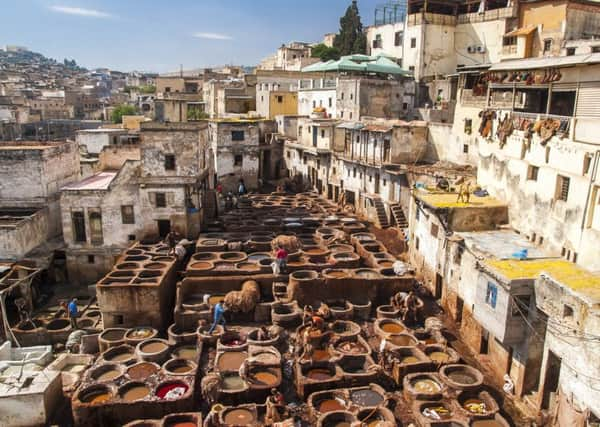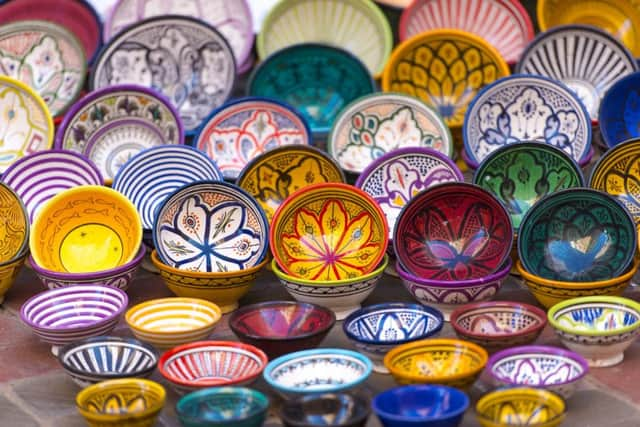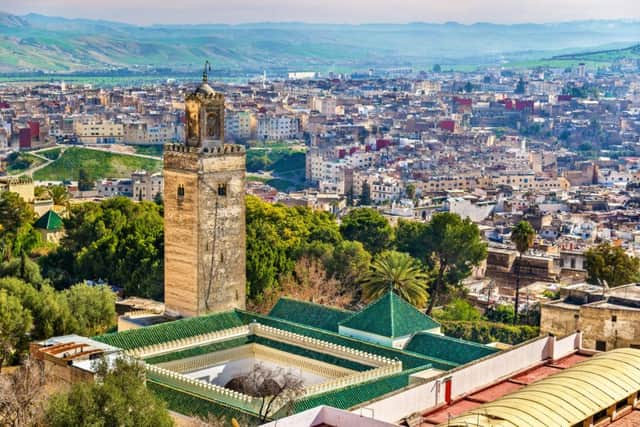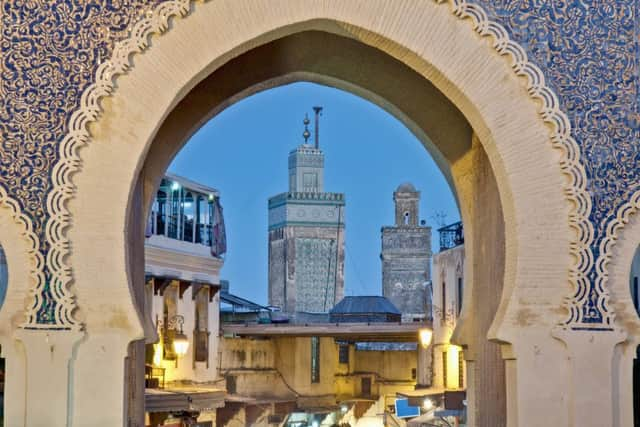Fes, Morocco: Travel, Scotland on Sunday


I’m going to take you back to the autumn of 2011, when I first visited Morocco. I took on the country in two weeks, meandering my way from the north to the deep south. I visited many places: the capital city of Rabat, Casablanca, the hippy town that is Essaouira, the filmmakers’ paradise of Ouarzazate and, of course, Marrakech, the supposed must-see destination.
These were all impressive locations, but there’s another that really stood out from the crowd. Before travelling to Morocco, I thought Fes was something you wore on your head at a fancy-dress party. I left feeling it was the best the country had to offer.
Advertisement
Hide AdAdvertisement
Hide AdSituated in the north of the country and nestled at the foot of the Atlas Mountains, Fes is not on most travellers’ itineraries. Poorly connected to the outside world, it’s forgotten among the bigger names of Morocco. However, with a rich history, glorious geographic location and incredible medina, I was taken aback by its identity, vibe and unspoilt beauty. I left fearing that one day Fes would be tarnished as the modern world sets in.


Fast forward seven years, and here I am, back in Fes. Will it have changed? Will it have been taken over by snake charmers and McDonald’s? Will the medina be as breathtaking as I recall? Only one way to find out ...
My journey back to Fes started with a bit of a twist. Going via Lisbon, I missed my connecting flight by minutes and had an impromptu night in the Portuguese capital.
In fact, I had a glorious evening at the AlmaLusa hotel right in the city centre before a little bit of sightseeing in the morning. However, I had been to Lisbon before, and as much as it is one of Europe’s most attractive cities, it was Africa I was gunning for. Refreshed and reinvigorated, I caught a punctual flight the next day.
Fes-Saiss Airport has expanded in the past few years and there are connections to most Western European capitals. London is well served, with Air Arabia flying twice a week from Gatwick and Ryanair offering a direct route from Stansted. Flight times from these airports are in the region of three hours.


Landing in Fes is a joy. The view is spectacular. Arid desert, then suddenly the dark, forbidding mountains. You really feel that you’ve left Europe behind. You don’t need a visa for Morocco, just a bit of French to banter with the airport’s passport control.
Last time I was here, I stayed in a hostel. With a bit more money in my wallet these days, I decided to go down the hotel route, splitting my time between Riad Fes, amid the hubbub of the city, and Hotel Sahrai, a little more modern and withdrawn from the hustle and bustle.
The city’s trump card is its medina. It is one of the best preserved Arabic old towns anywhere. From the outside, it looks rather tame, but once you are in it, you are in a maze. The streets are narrow, almost claustrophobic in parts, and it isn’t just for tourists. Most Fes locals shop here and it’s crammed full of people.
Advertisement
Hide AdAdvertisement
Hide AdThe best way to see it is on a walking tour, otherwise, you will get lost. There’s nothing dangerous within the medina, but you could spend hours trying to find your way out. People live here, there are numerous market stalls, children play football in the alleyways and donkeys rattle around laden with wares. Cars are banned – though there would be no room for them – and once inside you must keep your wits about you.


Despite the organised chaos, Fes feels safe. The locals have very little interest in the tourists who do make it this far, although they are shy, reluctant to have their photo taken. Some of the food on offer, such as olives, chillies and fish, is alluring and colourful, while you can dip into small shops selling Moroccan robes, silverware, pottery and leather goods. Bartering is encouraged – it’s all part of the game.
Slap bang in the centre is a tannery. Go early in the morning as the mint they give you to stuff up your nose doesn’t alleviate the stench. Don’t let the smell put you off though – the pots of dye with locals treating and colouring the leather is an unforgettable view.
The medina is littered with homes with their own courtyards known as riads. They look pretty bland from the outside, but Moroccan culture insists that you keep your life and wealth behind closed doors. Many are abandoned, as when Casablanca and Rabat became French strongholds in Morocco, locals left Fes to make their cash in the bigger cities. Only now, as money drips back into Fes, have more and more riads been restored to their former glory.
My first hotel was Riad Fes and it is one of the more luxurious offerings in the city. Each room has an individual feel. Despite being so close to the medina, you don’t hear its noise, and the food is excellent. Moroccan cuisine is pretty one-dimensional but what they do, they do very well. Tagine is the most famous dish, normally made with chicken and lamb, but their pastilla – a tart filled with marinated quail and dusted with almonds – was my personal favourite.
My second lodgings, Hotel Sahrai, overlooked the city. You can gaze over Fes from the infinity pool. Luxury and tranquillity are the order here, with rooftop bars and jazzy cocktails. It’s the only hotel in Africa to have a Givenchy spa. Not that I’m an expert on facials, but the one I have does leave my travel-weary beard feeling softer than ever.
I’m glad I used two hotels of similar quality but contrasting locations. Two days are enough right in the centre of Fes. Another two give you time to relax while viewing the medina from afar.
Outside of Fes, an excursion to Volubilis – a third century former Roman and Berber camp – is recommended. The ruins are vast and ooze history. Moulay Idriss, a nearby town which straddles two hills, is also a must for visitors. Named after the founder of Fes, it is a peculiar looking settlement riddled with narrow passes and Muslim history.
Advertisement
Hide AdAdvertisement
Hide AdStill, the region’s attraction is Fes itself. My second visit left me relieved that this old acquaintance has not changed despite the sands of time. There are no snake charmers and I couldn’t find a McDonald’s. A local told me that Morocco is happy to sacrifice Marrakech to the tourist masses and preserve Fes in its current state. Whether it will manage that, as people finally latch on to its untarnished medina, remains to be seen.
Therefore, best visit Fes while it is at its best.
• Rooms at Hotel Sahrai start from £159 (www.hotelsahrai.com)
• Rooms at Riad Fès start from £185 (www.riadfes.com)
• Direct flights to Fes from London Gatwick with Air Arabia (www.airarabia.com) twice a week and from Stansted with Ryanair (www.ryanair.com) twice a week.
• Moroccan National Tourist Office (www.visitmorocco.com)